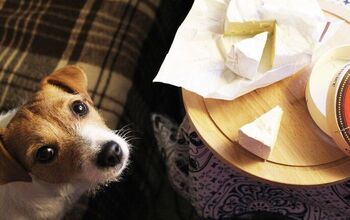How Long Should It Take to Train Your Dog the 5 Basic Commands?

Does your dog know the five basic commands? We're going to go over how long it should take to train your dog.
Dogs are willing learners and while some pet owners may opt to go the dog trainer route, it’s not that hard or time-consuming to get your little buddy up to speed on the five main commands. They include Sit, Stay, Leave It, Lay/Down and Heel. With name recognition or Recall/Come, leading the charge. And this time spent training your dog is a great way to bond with a new pooch and set expectations you’re both comfortable with.
So, plan to train 3 to 5 times a day with sessions lasting no longer than 10 minutes each. After that, it stops being fun for your dog, he’ll begin to disengage, and you’ll lose the enthusiasm needed to keep him learning.
Want to know how to do it yourself? We’re sharing some rewards-based training tips below:
Recall/Come
Before being able to train your dog on any trick or command, he needs to be paying attention. For dog owners, the term “easier said than done” is probably the first thing that springs to mind, right? But with rewards-based training, it’s easy (or at least easier). It refers to rewarding your dog when he gets the command right versus scolding him when he gets it wrong. So, keep a pocketful of treats on the ready when training.
Start by holding a high-value treat close to your face or chest area and calling his name. Now, you have him not only looking your way but fixated on what you’re holding. Call him over, and when he responds appropriately, offer him the treat. Do this frequently throughout the day and gradually extend the time between him coming to you and receiving his treat.
A variation on this command includes clicker training. It’s a small, hand-held device with a unique, high-pitched click that you activate the moment your dog responds to your call. He looks over, you click the clicker. He comes to you and you click the clicker and immediately offer him a treat as a reward. This association technique is great for dogs who may be easily distracted or hard of hearing. And it can be used when teaching all of the commands.
The goal of the Recall command is that your dog will a) come to you when called and b) look your way frequently to see if you might have something tasty for him. This last rationale is important if you’re at a leash-free and he’s out of ear range. You want him to keep visual track of you and be ready to return at a moment’s notice.
Sit
Probably the easiest of the commands. Use the recall command to draw your dog over to you. Some dogs will instantly assume a seated position, but you want to know he’s doing this on command versus out of comfort. Hold the treat above his head and deliver the Sit command. When he eventually sits, offer him praise and a treat. For clicker training, click the moment his derriere hits the ground, then offer up the treat so he begins to associate the two.
Down
Use the Recall/Come command, followed by the Sit command. Reward your pet each time he responds to your request and performs the action you’re commanding. Now that he’s seated and looking your way, say “Down”, then take a treat and slowly lower it down in front of your dog until you’re holding it between his two front paws. Slide it out along the ground slowly and his nose and body will follow the scent of the treat until he’s laying down. For rescue dogs, this can be slow learning because it requires them to be positioned in a vulnerable position for dogs. Be sure to offer him his treat and praise, and if you’re clicker training, click at the same time his treat is dispensed.
Stay
This is a trickier command to teach when dogs are young and distracted, old and bored, or just love you so much they want to follow you every time you get up to leave. So, expect to be patient when training this command. And the American Kennel Club stresses the need for a start and finish to the Stay command. Choose a word to be used exclusively to release your pet from the Stay position. It could be “OK” or “finished” - you pick. Now, because it should be strictly for releasing your pet from his Stay, avoid choosing his name, “come”, or any other command word that might confuse him when used later.
When your pet has assumed a Sit or Down position, use the Stay command and within a few seconds, use the release word and issue a treat. Gradually increase the length of time between the command and the release word. Also, start taking a few steps away between the command and the release. Your goal is to have your dog stay and wait for you to return and reward him. Not get up and follow. This particular command could take several days to master.
Leave It
Whether your dog is roaming free at a dog park or leashed and walking the city streets, he can snatch up something he considers tasty, in the blink of an eye. That’s why the Leave It command is so important. When issued, your dog should immediately drop whatever he’s picked up. So, to keep your dog safe, training this command needs to be high on your list.
Here's how to start. Hold out both arms with enclosed fists – each holding a treat. Your dog will zero in on one of your fists and, at that moment, say Leave It. He’ll continue to sniff and lick at your fist. When he eventually stops, open the other fist and give him the treat. You’re trying to show him that when he leaves it, he gets a reward.
Repeat this command over a few days and each time your dog heads toward the treat in your enclosed fist, say Leave It. Your initial goal is for him to immediately move away from that fist when he hears those words. When he does, reward him with the treat from the other fist. Over time, you want your dog to look up and make eye contact when you say Leave It, then wait for his reward.
After he’s picked up on the term Leave It, you need to put him to the test. You’ll need both a ho-hum basic treat as well as a high-value tasty one for this training session. Put the more basic treat on the ground and cover it. When your dog heads for it, say Leave It. When he stops or hesitates, offer him the better treat. Your goal is to have your dog associate something better and tastier, waiting for him if he leaves what’s on the ground, untouched.
Heel
No one wants their dog tugging and pulling when out for a walk, and that’s where the Heel command is so important. Choose which side you want your dog walking on – left or right – and remain consistent or you’ll find them switching it up and going back and forth. Next, align your dog by your side and offer him a couple of treats for remaining in that position. Start by taking just one or two steps and as your dog moves in synch, give him another treat for encouragement. If he begins to tug and charge ahead, change the direction you’re walking and begin again by having him align himself - in a standing or seated position – with the side of your leg.
Don’t crouch down or lean over to offer your pet his treat. Dispense from a standing position and at your knee or hip level so as not to break form.
Gradually increase the distance travelled between treats. Your goal is to be able to take your dog on walks that allow him to enjoy the mental stimulation provided by new sights, sounds and smells (so allow him some exploration time).

Sharing space with three seriously judgy Schnoodles and a feline who prefers to be left alone. #LivingMyBestLife
More by Mary Simpson























